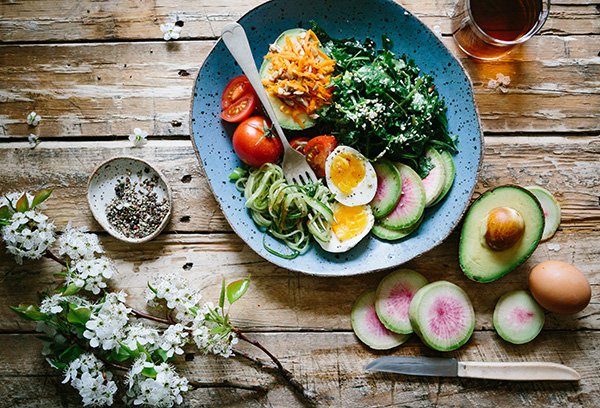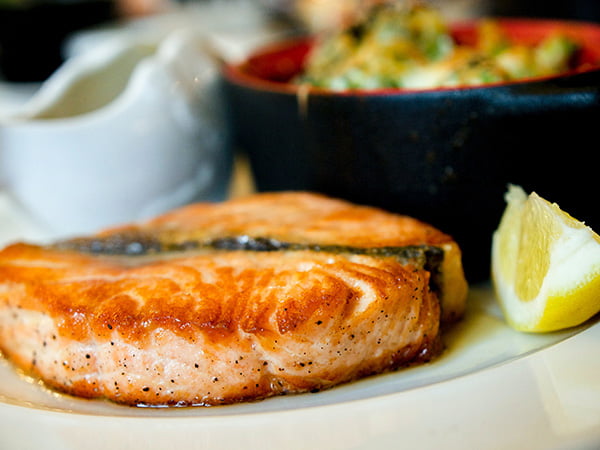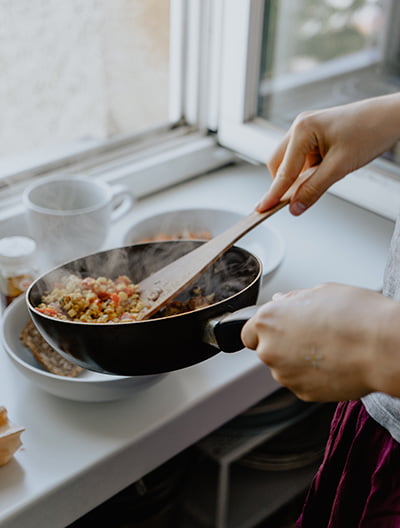When it comes to losing weight, we all drag on the traditional dieting that often involves restrictive eating patterns and short-term fixes that are hard to maintain.
Fortunately, there is an abundance of methods to shed pounds without resorting to strict dieting and experiencing constant hunger. It's time to ditch dieting once and for all!
By following these weight loss without dieting tips, you can avoid the ups and downs of restrictive dieting while still enjoying all your favorite foods (in moderation, of course). As you likely know from personal experience, the all-or-nothing mentality with a restrictive diet is often counterproductive to weight loss. Thanks to a growling stomach, what began as a portion-controlled day can quickly turn into a fridge raid come 8 PM. Along with the added calories that can derail your weight loss plan comes the guilt of thinking you ruined your diet.
Instead of being stuck in an endless cycle of yo-yo dieting, follow these 16 ways to lose weight and manage weight without being hungry.
How To Lose Weight Without Dieting
1. Use an Air Fryer Instead of Deep Frying
There's no need to sacrifice your favorite fried foods when trying to lose weight. By swapping from deep frying to air frying, you can save calories and still enjoy a healthier version of your go-to cheat meal. Air fryers can easily recreate the crispy texture you love, requiring only a fraction of the oil. That means you can still enjoy your favorite game-day snacks like wings, fries, and jalapeños poppers while cutting up to 80% of the calories!
Fried foods typically absorb 8-25% of their weight in oil, depending on the cooking time and type of food. While undeniably delicious, deep frying can quickly add hundreds of calories to your meal. While deep fryers use multiple cups of oil, air frying requires a tablespoon or less, helping you cut major calories and even helping you lose weight without dieting and sacrificing crispiness.
2. Manage your liquid calories
Water is calorie-free and essential for hydration. Make water your primary beverage choice throughout the day. Keep a water bottle with you at all times to ensure proper hydration and steer clear of unnecessary calorie intake from other liquids.
Beverages such as soda, fruit juices, energy drinks, and sweetened coffee or tea are often packed with calories and offer limited nutritional benefits. Opt for sugar-free or low-calorie alternatives, or gradually reduce the amount of added sugar in your beverages.
Instead of hitting Starbucks or a coffee shop for your fancy coffee that is loaded with sugar and flavoring agent, opt for black coffee or cold brew coffee. Plain black coffee and cold brew coffee are virtually calorie-free. Adding a small amount of low-calorie sweetener or a splash of unsweetened almond milk or skim milk can enhance the flavor without significantly increasing the calorie content.
Green tea is a popular low-calorie caffeinated beverage. It contains antioxidants and has a mild caffeine content. Enjoy it plain or with a squeeze of lemon for added flavor. And if you are in need of a high caffeine boost, opt for matcha green tea. Matcha is a type of powdered green tea that contains a slightly higher caffeine content compared to traditional green tea. It can be whisked into hot water or milk, providing a flavorful and energizing drink with minimal calories. Matcha green tea and green tea are not only low in calories but can help support weight loss and manage a healthy weight.
3. Fill Up on Low-Calorie Density Foods

Calorie density refers to the amount of calories contained within a specific volume of food. By choosing to eat foods with low-calorie density, you can eat more for the same amount of calories, ensuring you feel full even after a portion-controlled meal.
As a bonus, eating more of these healthy foods can increase your fiber intake, antioxidants, and immune-boosting nutrients like vitamins C and D, zinc, and iron.
Healthy, low-calorie density foods include leafy green vegetables, Greek yogurt, oats, eggs, air-popped popcorn, and fruits like berries, grapefruit, and watermelon. For an easy calorie-saving swap, try eating your takeout with cauliflower rice instead of white rice.
4. Eat Smaller Meals Throughout the Day
Incorporating frequent, smaller meals throughout the day can be advantageous for weight loss due to multiple reasons. Consuming smaller meals frequently can help boost your metabolism while helping you eat fewer calories without you realizing it. Digesting food requires energy, so eating smaller meals more often keeps your metabolism active throughout the day, leading to more calorie burning.
Eating smaller meals allows you to have better control over portion sizes. It helps prevent overeating, as you're less likely to feel excessively hungry and indulge in large portions. This approach promotes a more balanced and controlled calorie intake.
Consuming smaller, regular meals also helps maintain stable blood sugar levels. When you eat larger meals with long gaps in between, your blood sugar levels can spike and then drop, leading to cravings and overeating. Eating smaller, frequent meals provide your body with a steady supply of energy, reducing the likelihood of sudden hunger pangs and unhealthy snacking.
5. Choose Your Alcohol Wisely
Let's face it. These days, the idea of cutting alcohol altogether seems ridiculous. By choosing lower-calorie drinks, you can still enjoy a few alcoholic beverages throughout the week.
Opt for lower-calorie alcoholic beverages. For example, choose light beer, wine spritzers, or spirits mixed with low-calorie mixers like soda water or diet soda. These options generally contain fewer calories than heavy beers, sugary cocktails, or creamy liqueurs.
As a rule of thumb, straight alcohol and simple mixed drinks have the lowest calories. Limit mixed drinks and cocktails as they are loaded with sugary mixers, syrups, or sodas, which can significantly increase the calorie content. Sugar-packed mixed drinks like piña coladas and margaritas can have upwards of 600 calories, while a vodka soda with lime has 100 calories or less. Going with a simple mixed drink like gin and tonic, vodka soda, or mojito can help you consume fewer calories.
To reduce overall calorie intake, consider alternating alcoholic beverages with water. This helps keep you hydrated, slows your alcohol consumption, and can help you feel more satisfied throughout the evening.
6. Eat Lean Protein

Protein has powerful effects on your appetite. Adding lean protein to each meal or snack will help you lose weight by helping you to feel full longer, reduce hunger, and eat less.
Compared to high-fat protein options, lean protein sources often have a lower calorie content. By adopting this approach, you can effectively control your calorie intake while still enjoying a larger quantity of food. This strategy aids in creating the calorie deficit required for weight loss.
Nutrient-dense lean protein sources, such as skinless poultry, fish, lean cuts of meat, tofu, legumes, and low-fat dairy products, are excellent choices. These foods offer a wealth of essential vitamins, minerals, and amino acids that promote overall health and well-being.
Preserving muscle mass is crucial during weight loss. Consuming sufficient protein, especially from lean sources, aids in maintaining lean muscle tissue while facilitating fat loss. This is crucial for maintaining a healthy metabolism and achieving a toned physique.
7. Chew Thoroughly And Slow Down
When it comes to chow time, how fast you eat plays a big factor in weight management and weight loss. Give yourself time to chew food thoroughly and let your brain process that you have had enough to eat. Recent research findings indicate that individuals who eat quickly are more likely to gain weight than those who eat at a slower pace.
8. Drink Plenty Of Water
We all know the importance of staying hydrated. But what we didn't know is that drinking water can also help you to lose weight and burn more calories. Drinking plenty of water will help you eat less, especially if you drink before a meal. In addition to its numerous benefits, drinking water can assist in calorie burning, waste elimination, and fat burning within the body.
In a 2016 study published in the Journal of Human Nutrition and Dietetics conducted in the United States involving over 18,000 individuals, researchers discovered that individuals who consumed higher quantities of water reported greater satisfaction and consumed fewer calories throughout the day.
To maintain proper hydration, it is recommended to aim for an approximate intake of 0.5 ounces of water per pound of body weight on a daily basis.
9. Avoid Overloading On High Calories Healthy Food

While eating healthy can help with weight loss, it can also cause weight gain. This may sound confusing; how could healthy food cause weight gain?
Extremely healthy food such as nuts and avocados are high in calories, loaded with fiber, and packed with healthy fats. While these healthy foods can help you lose weight, you can also gain weight when you overindulge because they are high-fat and high-calorie food. But this doesn't mean you should eliminate them from your diet, it just means you must consume these types of food in moderation.
10. Incorporate regular physical activity
Engage in moderate aerobic exercises such as walking, jogging, swimming, or cycling for at least 150 minutes per week. Additionally, include strength training exercises to build muscle, which can boost your metabolism.
11. Be consistent and patient
Achieving sustainable weight loss requires patience and time. It is more effective to concentrate on implementing gradual, healthy modifications to your lifestyle rather than relying on instant solutions. Set realistic goals for yourself and take time to acknowledge and celebrate your progress as you make positive changes.
12. Manage stress levels

High levels of stress can contribute to emotional eating and weight gain. Discovering healthy methods to cope with stress is essential. Consider incorporating activities like yoga, meditation, deep breathing exercises, or engaging in enjoyable hobbies as effective stress management techniques.
13. Get Restful Sleep
Sufficient sleep is crucial for supporting weight loss endeavors, as sleep deprivation can disturb the equilibrium of hunger and fullness hormones. Inadequate sleep can raise ghrelin levels, which stimulate appetite, while simultaneously lowering leptin levels, which signal feelings of fullness. This hormonal imbalance can increase cravings and overeating, hindering weight loss efforts.
Being well-rested increases the likelihood of making healthier food choices. Sleep deprivation can impair decision-making and increase impulsivity, making it more difficult to resist unhealthy, high-calorie junk food.
Good sleep supports energy balance, giving you more energy for physical activity. Regular exercise is crucial for weight loss, and adequate sleep provides the energy and stamina needed to be physically active. Moreover, quality sleep aids in post-workout recovery, allowing you to optimize the advantages gained from exercise. Sufficient sleep enhances cognitive function and self-control, helping you make mindful choices and stick to your weight loss plan.
14. Start Your Day With Breakfast
A filling breakfast can help curb hunger and keep you satisfied for longer throughout the day. Including a balance of protein, healthy fats, and fiber-rich carbohydrates in your breakfast can promote satiety, reducing the likelihood of overeating or snacking on unhealthy foods later in the day.
In a study, individuals who consumed a high-protein breakfast consisting of eggs and toast reported feeling less hungry and ate fewer calories later in the day in comparison to those who had a lower-protein breakfast with cereal.
15. Cooking Your Own Meal

Preparing meals at home grants you the freedom to select the ingredients for your dishes. This enables you to make healthier choices by incorporating lean proteins, whole grains, fruits, vegetables, and healthy fats into your meals. This allows you to include more nutritious foods and create nutrient-dense meals with adequate fiber, vitamins, and minerals while reducing the intake of unhealthy additives, excessive sodium, and unhealthy fats.
Restaurant meals and pre-packaged convenience foods often contain higher calorie content due to added fats, sugars, and larger portion sizes. By cooking at home, you gain control over the ingredients and cooking methods, thereby reducing the intake of unnecessary calories.
By preparing healthy meals in meal prep containers with a focus on whole, unprocessed foods, you can enjoy delicious meals while managing calorie intake. If you are someone who dines out daily and regularly, switching to home-cooked meals can promote weight loss and may even help you lose weight quickly.
16. Use Smaller Plates
By using a smaller plate, you may feel like you're still enjoying a full meal, even if the actual quantity of food is smaller. This can help satisfy your desire for a satisfying meal while controlling your calorie intake.
This trick can be particularly helpful for high-calorie foods. Eating from a full plate can create a sense of satisfaction and completion, regardless of the plate's size. Opting for a smaller plate size can contribute to a sense of mental satisfaction, eliminating the need for additional servings or overeating.

